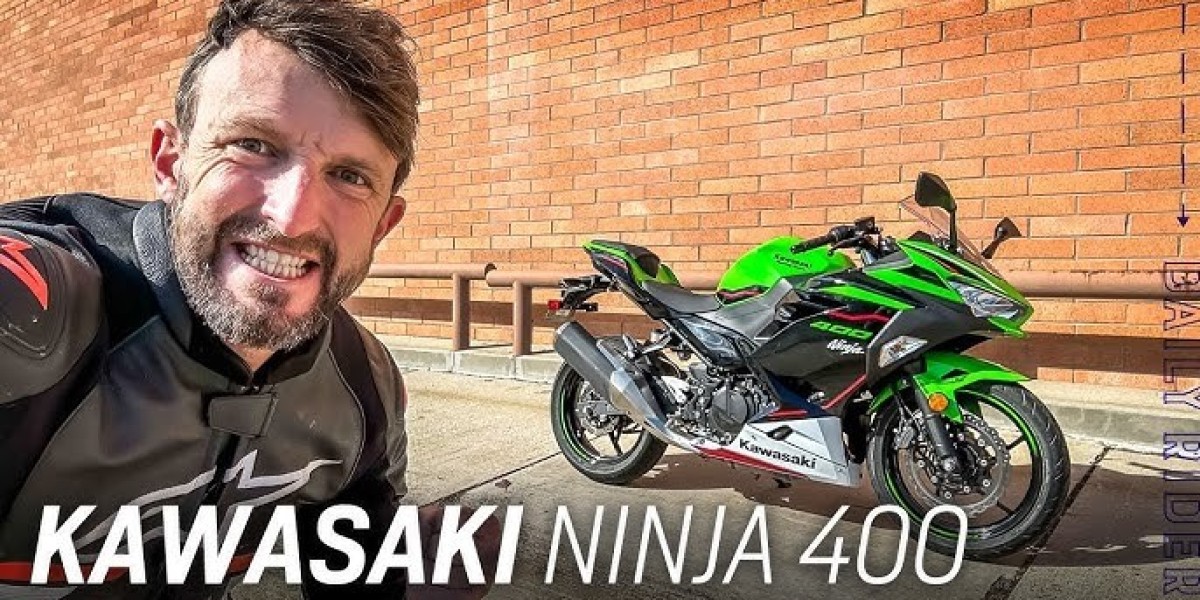Building a track bike is an exciting project that’s as rewarding as it is challenging. My journey with transforming a used 2023 Kawasaki Ninja 400 into a track-ready beast has been a true blend of passion, hands-on learning, and problem-solving. If you’re curious about getting your bike on the track without breaking the bank, let me share some of my experiences, tips for budget-conscious modifications, and essentials for gearing up safely. Let’s dive into converting a street bike into a track-ready machine.

1. Start with a Solid Foundation
A good track build begins with a bike that has potential, and the Ninja 400 fits the bill beautifully. Lightweight, nimble, and packing enough punch to keep up on most track days, the Ninja 400 is ideal for riders who want to hone their skills without overwhelming power.
I found my Ninja 400 second-hand with a bit of cosmetic damage — ideal for a project like this. Minor scrapes or dents can actually help reduce the bike’s cost, as long as the frame and engine are solid. Plus, you won’t worry about scratching it on your first track day. If you’re buying used, check for key areas like the suspension, brakes, and electrical system, and be prepared to replace worn parts.
2. Budget Upgrades for Enhanced Performance
The goal of a budget track build is to focus on modifications that directly enhance handling, reliability, and safety. Here are some affordable upgrades that can make a big difference:
Tires
Good tires are the most essential upgrade. I opted for track-oriented tires with sticky compounds to improve grip. Even a slightly used set of track tires can provide better performance than new street tires, so keep an eye on online forums or track groups for deals.
Suspension
Stock suspension can limit your bike’s handling capabilities on the track. While aftermarket suspension can be pricey, a middle-ground option is to upgrade the fork springs and rear shock. This small change can enhance stability and responsiveness, especially in corners. Many companies offer budget-friendly options for the Ninja 400 that make a noticeable improvement without going full-custom.
Brakes
Braking power is crucial on the track, so invest in high-performance brake pads designed for aggressive riding. I upgraded the brake lines to stainless steel to reduce fade and maintain consistent braking. This upgrade doesn’t cost much and greatly improves braking feel and durability.
Lightweight Components
Reducing weight enhances performance without needing more horsepower. Consider removing non-essential parts, such as the mirrors, center stand, and passenger pegs. This cuts weight and reduces the chance of these parts becoming dangerous debris if you take a spill.
3. Gear Up for Safety and Confidence
Riding on a track requires specialized gear to keep you safe at higher speeds and during potential falls. Prioritizing safety gear is just as important as upgrading your bike, if not more so.
Full Face Helmet
A full-face helmet with a high safety rating is essential. Many tracks won’t let you participate without a Snell or ECE-rated helmet, so be sure your gear is compliant.
Race Suit
Invest in a one-piece or two-piece leather race suit. Leather provides better abrasion resistance than textile, which is crucial on the track. You might find deals on quality used suits, but ensure they fit well and offer adequate protection.
Helmet Intercom
Be prepared with a motorcycle helmet intercom to keep in touch with other riders around you, which helps improve riding safety.
Gloves and Boots
Track gloves with extra wrist support and boots with toe sliders provide added safety. You’ll want gear that protects your ankles, knuckles, and other vulnerable areas, so don’t skimp here.
Back and Chest Protection
Some suits come with built-in armor, but standalone back and chest protectors can offer better coverage. These protectors aren’t a huge investment but make a big difference in protecting your torso during a fall.
4. Practice and Fine-Tune for the Track
Once your Ninja 400 is outfitted and ready, it’s all about getting a feel for it on the track. Initially, I noticed my bike started to choke at 11,000 RPM in higher gears, which capped my top speed at around 175 kph — a significant drop from the original 205 kph. While I initially swapped out the spark plugs, I’ll be exploring more solutions to restore its top-end performance.
Working out these quirks is part of the learning process with track bikes. Regular maintenance, combined with a focus on keeping things simple, will make your track days smoother and more enjoyable. Here are a few other maintenance tips to keep your bike track-ready:
- Regular Oil Changes: High-speed riding requires a well-lubricated engine. Swap out the oil more frequently than you would for street riding.
- Check Your Chain: Inspect and adjust your chain tension before each track day. The chain experiences more wear from the constant acceleration and deceleration.
- Monitor Tire Pressure: Tire pressure has a huge impact on handling. Track riding often requires lower tire pressure than street riding, so double-check before each session.
5. Enjoy the Journey
Transforming my Kawasaki Ninja 400 into a track-ready bike has been an adventure. Every modification, ride, and adjustment has deepened my appreciation for the sport and improved my skills as a rider. Whether you’re looking to shave seconds off your lap time or simply enjoy the thrill of riding on a track, creating a budget-friendly track bike can be a fulfilling experience. Just remember, a fast lap starts with a well-prepared machine and a focused mindset.
The track awaits — happy riding!



